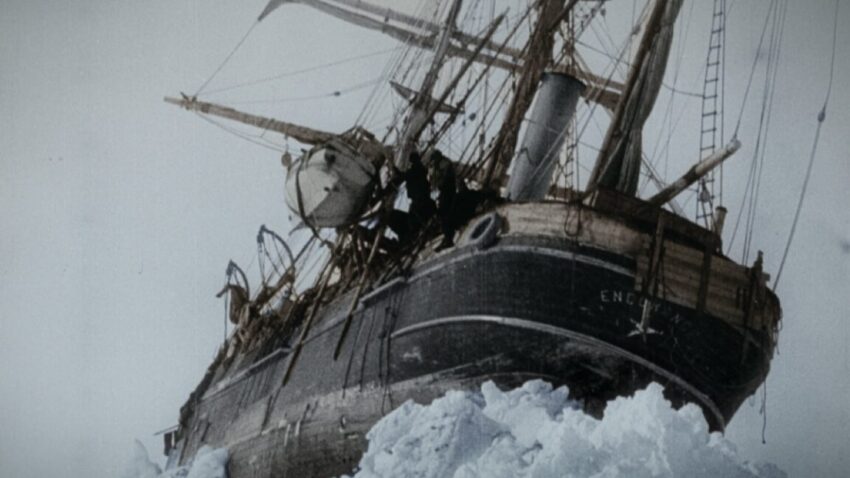
here s the real reason endurance sank A recent analysis has shed new light on the sinking of the Endurance, revealing that the ship’s demise was not solely due to ice damage but rather the overwhelming forces exerted by the Antarctic environment.
here s the real reason endurance sank
Historical Context of the Endurance Expedition
In 1915, Sir Ernest Shackleton embarked on one of the most ambitious polar expeditions in history. The Endurance was intended to traverse the Antarctic continent, a feat that had never been accomplished at the time. Shackleton and his crew set sail with high hopes and a well-prepared vessel, which was believed to be one of the strongest polar ships of its era. However, their journey took a dramatic turn when the ship became trapped in pack ice in the Weddell Sea.
The crew endured extreme conditions for months, facing freezing temperatures and dwindling supplies. Ultimately, the Endurance sank, leaving the crew stranded on the ice. Remarkably, all members of the crew survived, thanks to Shackleton’s leadership and their resourcefulness. The story of their survival has since become legendary, often overshadowing the technical aspects of the ship and the environmental challenges they faced.
Revisiting the Assumptions
For decades, the narrative surrounding the Endurance has been shaped by two prevailing assumptions: first, that the ship was the strongest polar vessel of its time, and second, that it sank primarily due to ice damage that tore away its rudder. These assumptions have been widely accepted in popular culture and historical accounts. However, a recent study published in the journal Polar Record challenges these long-held beliefs.
New Findings on the Sinking
According to the research conducted by Jukka Tuhkuri, a polar explorer and researcher from Aalto University, the Endurance would have likely sunk even if its rudder had remained intact. The study indicates that the ship was subjected to cumulative compressive forces from the surrounding ice, which ultimately led to its sinking. This revelation suggests that the vessel’s design was inadequate for the extreme conditions it encountered.
Tuhkuri’s analysis highlights that the Endurance was not built to withstand the immense pressures exerted by the Antarctic ice. While the ship was indeed a marvel of engineering for its time, it had limitations that were not fully understood or appreciated by its crew, including Shackleton himself. The findings raise questions about the decision-making process that led to the expedition’s launch, given the known risks associated with polar exploration.
The Role of Environmental Forces
The Antarctic environment is notoriously harsh and unpredictable. The pack ice in the Weddell Sea is known for its dynamic and often violent behavior, with shifting ice floes that can exert tremendous pressure on any vessel caught within. Tuhkuri’s research emphasizes that the Endurance was not merely a victim of a single catastrophic event but rather a casualty of the cumulative effects of the ice surrounding it.
This understanding of the sinking has significant implications for how we view polar exploration and the risks involved. It underscores the importance of recognizing the limitations of technology, even in the face of human ingenuity and determination. Shackleton’s decision to proceed with the expedition, despite the known dangers, reflects a complex interplay of ambition, exploration, and the inherent risks of venturing into uncharted territories.
The Preservation of the Endurance
In 2022, the Endurance was rediscovered during the Endurance22 mission, which aimed to locate the shipwreck and document its condition. The expedition was a remarkable success, as the ship was found in pristine condition, largely due to the cold temperatures and the absence of wood-eating microbes in the Weddell Sea. This preservation has allowed researchers to study the ship and gain insights into its construction and the conditions it faced.
Mensun Bound, the exploration director of the Endurance22 mission, remarked on the exceptional state of preservation of the shipwreck, describing it as the finest example he had ever seen. The discovery has provided a wealth of information about early 20th-century shipbuilding techniques and the challenges faced by explorers of that era.
Implications for Future Exploration
The findings from Tuhkuri’s research and the discoveries made during the Endurance22 mission have broader implications for future polar exploration. As interest in the Arctic and Antarctic regions continues to grow, understanding the historical context of past expeditions can inform current and future endeavors. The lessons learned from the Endurance’s sinking can help guide the design and construction of modern vessels intended for polar exploration.
Moreover, the research emphasizes the need for robust risk assessment and management strategies when planning expeditions in extreme environments. As climate change alters the dynamics of polar regions, the risks associated with ice navigation may also change, necessitating a reevaluation of existing protocols and safety measures.
Shackleton’s Legacy
Despite the tragic fate of the Endurance, Shackleton’s legacy endures as a symbol of resilience and leadership in the face of adversity. His ability to lead his crew to safety after the ship’s sinking has inspired generations of explorers and adventurers. However, the new findings about the ship’s design and the environmental forces at play add a layer of complexity to Shackleton’s story.
While his decision to embark on the expedition may be viewed as reckless in hindsight, it also reflects the spirit of exploration that characterized the early 20th century. Shackleton’s journey was not just about reaching the South Pole; it was about pushing the boundaries of human knowledge and endurance.
Conclusion
The recent analysis of the Endurance’s sinking challenges long-held assumptions about the ship and its fate. By understanding the cumulative forces that led to its demise, we gain a deeper appreciation for the challenges faced by early polar explorers. The preservation of the Endurance serves as a reminder of the enduring spirit of exploration and the lessons that can be learned from the past.
As we continue to explore the polar regions, it is essential to recognize the limitations of our technology and the unpredictable nature of the environment. The story of the Endurance is not just a tale of survival; it is a testament to the complexities of exploration and the ongoing quest for knowledge in the face of uncertainty.
Source: Original report
Was this helpful?
Last Modified: October 6, 2025 at 5:37 pm
0 views















